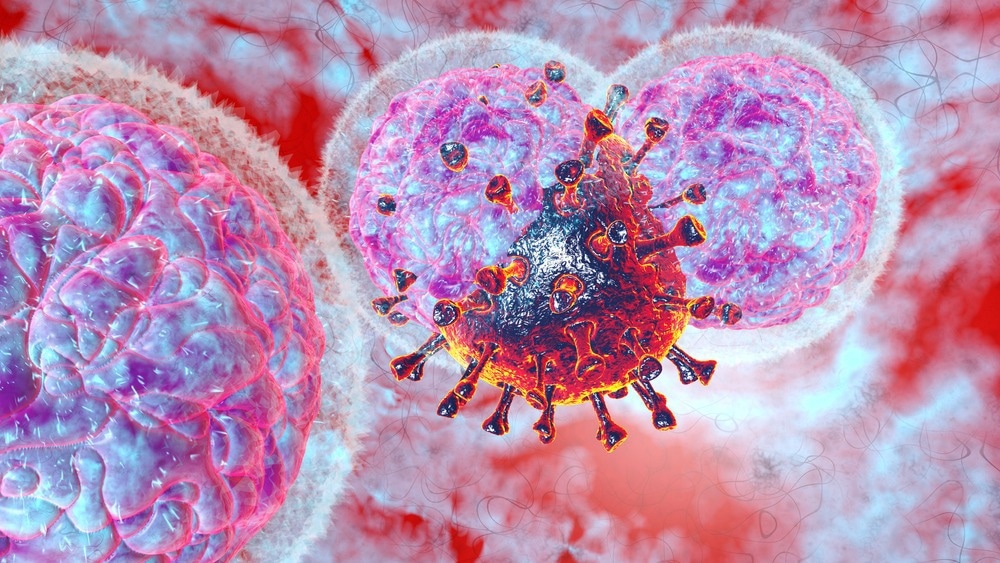In a recent review published in Cell Biochemistry and Function, researchers assessed the association between natural killer (NK) cell dysfunction and coronavirus disease 2019 (COVID-19) disease severity.
 Study: NK cell dysfunction is linked with disease severity in SARS-CoV-2 patients. Image Credit: Numstocker/Shutterstock
Study: NK cell dysfunction is linked with disease severity in SARS-CoV-2 patients. Image Credit: Numstocker/Shutterstock
Background
Severe acute respiratory syndrome coronavirus 2 (SARS-CoV-2) infections are characterized by symptoms including cough, fever, and weakness. NK cells are the primary defense barrier used by the innate immune system against pulmonary viruses. Various studies have reported that the cytotoxic role of NK cells is adversely impacted in COVID-19 patients.
NK cell dysfunction and viral susceptibility
While the primary immune effector cells responsible for an antiviral response are NK cells, various studies show that the cytotoxic function of NK cells is inhibited during viral infections via different mechanisms. Recent reports show that infection caused by the Cytomegalovirus (CMV) can regulate NKG2D ligands present on the surface of CMV-infected cells. NKG2D acts as an activating receptor expressed on NK cells present in mice and humans. Furthermore, the team noted that the upregulation of NKG2A34 and the downregulation of NKG2D could reduce the cytotoxicity of NK cells against CMV.
The team observed that the presence of certain combinations of NK cell receptors and their respective cell ligands changed the outcomes related to the human immunodeficiency virus (HIV)‐1. Hence, understanding the mechanism involved in immune evasion by viruses and regulating immune surveillance could help develop immune control pathways. The role of NK cells in controlling COVID-19 infection pertains to the destruction of infected viruses by eliciting apoptosis via several mechanisms like granzymes and perforin degranulation. NK cells can also lyse the target cells via receptor-mediated apoptosis and tumor necrosis factor (TNF)‐related apoptosis‐inducing ligands.
Some studies have reported the disruption of NK cell function in COVID-19 patients with the dysregulation of inhibitory as well as activating receptors. Furthermore, lower proportions of NK cells and lymphocytes were reported in the peripheral blood of COVID-19 patients. Additionally, the chemokine storm observed in COVID-19 patients could induce the immune cells to penetrate the lungs. A direct association was also reported between high expression of C-C motif chemokine ligand 3 (CCL3), CCL4, CXCL9, CXCL10, and CXCL11 in infected lungs and COVID‐19 disease severity. The team also noted higher concentrations of interleukin-6 (IL‐6), IL‐1Ra, CCL2, CCL8, Chemokine C-X-C motif ligand 2 (CXCL2), CXCL8, CXCL9, and CXCL16 in COVID‐19-infected patients.
NKG2C
The team reported that the interactions incident between ligands and their cognate receptors can activate or inhibit cytotoxicity mediated by NK cells. CD94/NKG2 are expressed on CD8+ and N cells as C‐type lectin‐like receptors. NKG2 is found in the form of five molecular species such as NKG2A, B, C, E, and H. Among these, the interactions between NKG2C/CD94 and human leukocyte antigen E (HLA-E) ligand activate NK cell responses against cells infected by any virus. Furthermore, a direct association was observed between viral infection severity and the absence of NKG2C receptors.
Cytokine storm
The team observed that the cytokine storm experienced by COVID-19 patients is an important reason for the decreased NK cell function. In healthy individuals, NK cells efficiently destroy infected macrophages and other cells that cause cytokine storms, thus, reducing their circulating counts. Studies showed that the increase in the concentrations of IL‐1, IL‐6, IL‐18, IL‐8, IL‐10, and TNF-alpha in COVID-19 patients inhibited cytotoxicity of NK cells and damaged the pulmonary tissues. A study also noted that high proportions of IL-6 cytokine reduced the expression of granzyme B and perforin in NK cells. IL-10 and IL-6 reduced NK cell cytotoxicity in COVID-19 patients by down-regulating the stimulation of granzyme B, IFN-alpha, and perforin.
NK cell‐based immunotherapy
The cytotoxic activity of NK cells is inhibited in COVID-19 patients by several factors, including the down-regulation of the activating receptor, the high concentrations of the inhibitory receptors, as well as the cytokine storm.
Blocking of the inhibitory receptor by a specific monoclonal antibody
In healthy individuals, normal healthy cells evade the effect of NK cells through inhibitory interaction between the receptor and ligand. The researchers observed that the invasive cells present in COVID-19 patients evaded the Nk cell-mediated killing by upregulating the inhibitory cells. Hence, blocking the inhibitory receptors could enhance the antitumor immune response in the NK cells. A study also demonstrated that incubating the NK cells with an anti-NKG2A like monalizumab could improve the cytotoxic functions of NK cells in COVID-19 patients.
Conclusion
The study findings showed that the NK cells have a major role in controlling COVID-19 infection in infected patients. The researchers believe that manipulating key elements of the immune response like NK cells, controlling excessive cytokine secretion, and targeting inhibitory receptors with monoclonal antibodies are helpful approaches to restoring the inhibition of NK cells observed during COVID-19 infection.
Journal reference:
-
Dizaji Asl, K, Mazloumi, Z, Majidi, G, Kalarestaghi, H, Sabetkam, S, Rafat, A. NK cell dysfunction is linked with disease severity in SARS-CoV-2 patients. Cell Biochem Funct. doi: https://www.doi.org/10.1002/cbf.3725 https://onlinelibrary.wiley.com/doi/10.1002/cbf.3725